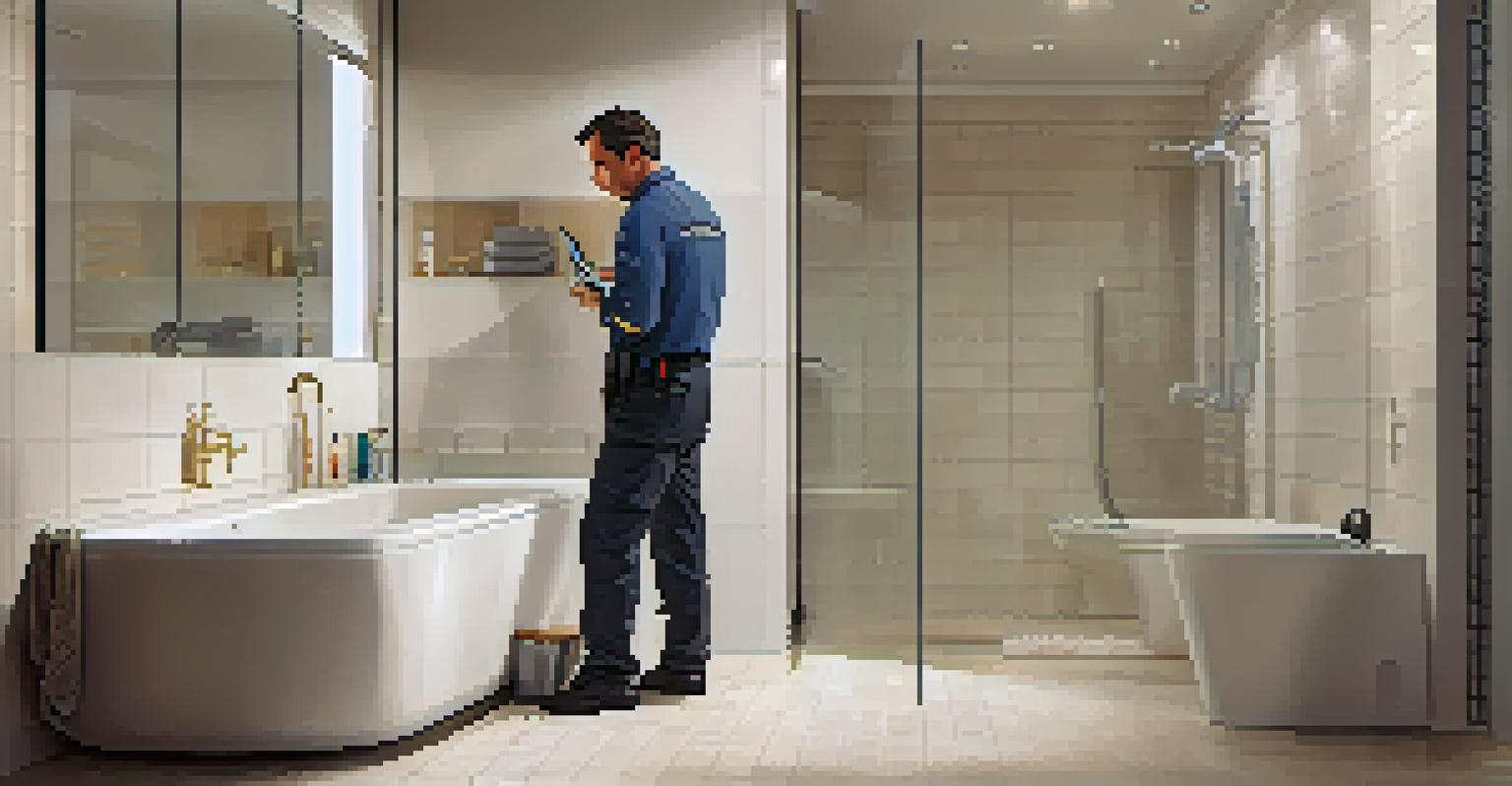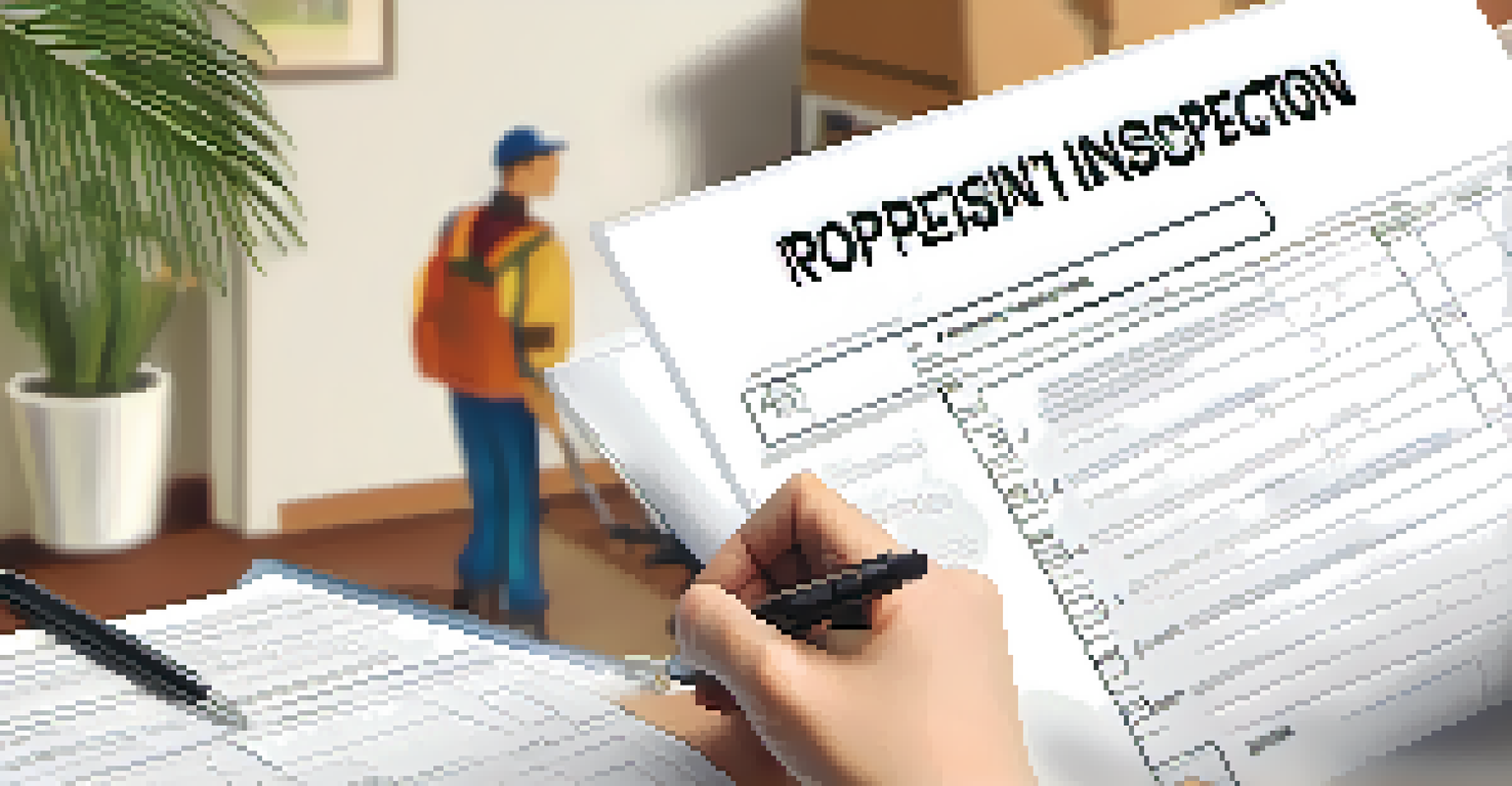How to Conduct Regular Property Inspections

Understanding the Importance of Property Inspections
Regular property inspections are crucial for maintaining the value and safety of your investment. They help identify potential issues before they escalate, ensuring that both the property and its occupants remain in good condition. Think of it like a routine health check-up; just as you monitor your health to prevent illness, inspecting your property helps prevent costly repairs down the line.
An ounce of prevention is worth a pound of cure.
Not only do these inspections safeguard your investment, but they also enhance tenant satisfaction. When occupants see that a landlord cares about the property's upkeep, it fosters a positive relationship. This proactive approach can lead to longer lease terms and fewer vacancies, ultimately benefiting your bottom line.
Lastly, regular inspections keep you compliant with local laws and regulations. Many jurisdictions require landlords to maintain certain standards, and failing to conduct regular checks can lead to legal issues. By staying ahead of these requirements, you can avoid fines and ensure a smoother operation.
Creating a Property Inspection Schedule
Establishing a regular inspection schedule is the first step towards effective property management. Depending on your property type and occupancy rates, this could range from quarterly to bi-annually. A well-planned schedule not only helps you stay organized but also sets clear expectations for your tenants.

To create an effective schedule, consider the specific needs of your property. For instance, a vacation rental may require more frequent inspections than a long-term residential lease. Be sure to communicate the schedule to your tenants, allowing them to prepare for your visits and ensuring a smoother process.
Additionally, remember to factor in seasonal changes that might affect the property. For example, inspecting the roof and gutters in the fall can prevent winter weather damage. By aligning your inspections with seasonal needs, you can enhance the effectiveness of your upkeep efforts.
What to Include During Inspections
A thorough inspection checklist is crucial to ensure nothing gets overlooked. Start with the exterior, examining the roof, siding, and landscaping. Look for signs of wear and tear, such as chipped paint or damaged shingles, which could indicate larger issues down the road.
The best way to predict the future is to create it.
Next, move inside to check essential systems like plumbing, electrical, and HVAC. Ensure that everything is functioning properly and look for any signs of leaks, strange noises, or unusual odors. Documenting these findings can help you prioritize repairs and maintain an organized maintenance log.
Finally, don’t forget to assess tenant areas, especially if they have made alterations or improvements. Checking for unauthorized changes or damages ensures that the property remains compliant with lease agreements, and helps you maintain a safe environment for all occupants.
Documenting Your Findings Effectively
Proper documentation is essential for tracking the condition of your property over time. Taking photos and writing detailed notes during inspections allows you to have a visual reference for future evaluations. This can be particularly useful when addressing issues with tenants or during lease renewals.
Consider creating a standardized inspection report template to streamline this process. This way, you ensure that all necessary areas are covered during each visit, making it easier to compare findings across inspections. A clear format can also enhance communication with your maintenance team, ensuring they understand what needs attention.
Moreover, maintaining organized records can protect you if disputes arise. Should a tenant challenge a maintenance claim or damage deposit, having documented evidence of the property's condition can be invaluable. This proactive approach not only safeguards your interests but also promotes transparency.
Communicating with Tenants During Inspections
Effective communication with your tenants is key to successful property inspections. Always notify them in advance of your planned visit, providing them with ample time to prepare. This not only shows respect for their privacy but also helps ensure that they are home to address any concerns.
During the inspection, engage them in conversation about any issues they might have noticed. Tenants often have valuable insights about the property's condition and can alert you to problems you might not see. This open dialogue fosters trust and can lead to quicker resolutions.
Finally, after the inspection, follow up with a summary of your findings and any necessary actions. Keeping tenants in the loop shows that you value their input and are committed to maintaining a safe and enjoyable living environment.
Addressing Issues Found During Inspections
When issues arise during inspections, it’s crucial to address them promptly. Prioritizing repairs based on urgency helps maintain the property’s condition and tenant satisfaction. For instance, a leaking pipe might require immediate action, while cosmetic issues can be scheduled for a later date.
Communicate with your maintenance team or contractors as soon as possible to schedule repairs. Providing them with the documentation you've collected will ensure they understand the issues clearly. This can streamline the repair process and help you manage your budget effectively.
Don’t forget to keep tenants informed about the status of repairs. Regular updates can alleviate concerns and reinforce the idea that you are a responsive landlord. By maintaining open lines of communication, you can enhance tenant retention and foster a positive living experience.
Evaluating the Effectiveness of Your Inspections
After conducting regular property inspections, it’s essential to evaluate their effectiveness. Review your documentation and repair records to identify any recurring issues. This can highlight areas that may need more frequent attention or suggest improvements in your inspection process.
Additionally, consider gathering feedback from your tenants about the inspection process. Their insights can help you refine your approach and address any concerns they may have. This feedback loop not only enhances tenant satisfaction but also solidifies your reputation as a responsible landlord.

Ultimately, the goal of regular inspections is to maintain a high-quality living environment. By continuously assessing and improving your inspection practices, you ensure the longevity of your property and the happiness of your tenants.